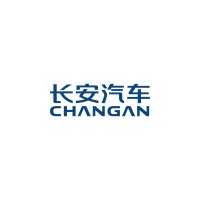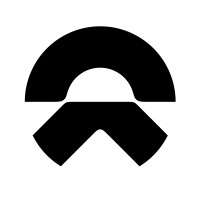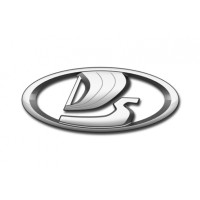
Changan Automobile Company Cyber Security Posture
changan.com.cnChangan Automobile is among Top 4 Chinese automobile groups , with a history of 157 years, Changan Automobile has 35 years’ experience in auto-making. Changan has 16 production bases and 35 vehicle and engine plants globally. In 2014, total production and sales of Changan-branded vehicles exceeded 10 million. Changan’s production and sales volume in 2016 hit 3,000,000 units. By July of 2018, Changan-branded vehicle users have exceeded 17 million. Changan Automobile is committed to building world-class R&D capability. For 5 sessions in the past 10 years, Changan has been NO.1 in R&D capability in China’s automotive industry. Changan has over 12,000 R&D personnel from 18 countries, nearly 600 are senior experts, sitting at the forefront of China’s auto industry. We have built a globally collaborative R&D network with various priorities, connecting the R&D centers in Chongqing, Shanghai and Beijing of China, Turin of Italy, Yokohama of Japan, Nottingham of UK ,Detroit of USA and Munich of Germany. To ensure all products meet customers’ demand of driving for 10 years and 260,000 kilometers, Changan has established product development system and test validation system. In April 2018, Changan unveiled The Third Breakthrough-Innovation and Business Venture Program, with an aim to build a global leading automobile company. With this blueprint, Changan is committed to transforming itself into a leading technology company offering smart mobility solutions and services. The program expects to drive growth by innovation, enhance efficiency as the core competitiveness in organization, transform the company in four key areas and boost innovation in three fields. Changan Automobile has launched a series of classic products including CS series, EADO series, RAETON series and ect. With “hi-tech and trendy, efficient and clean, safe and smart” guiding product design, Changan has been vigorously developing new energy vehicles and intelligent vehicles.
Changan Automobile Company Details
长安汽车
3614 employees
19974.0
none
Automotive
changan.com.cn
Scan still pending
CHA_1514448
In-progress
Between 200 and 800
This score is AI-generated and less favored by cyber insurers, who prefer the TPRM score.
 Changan Automobile Global Score
Changan Automobile Global Score.png)

Changan Automobile Company Scoring based on AI Models
| Model Name | Date | Description | Current Score Difference | Score |
|---|---|---|---|---|
| AVERAGE-Industry | 03-12-2025 | This score represents the average cybersecurity rating of companies already scanned within the same industry. It provides a benchmark to compare an individual company's security posture against its industry peers. | N/A | Between 200 and 800 |
Changan Automobile Company Cyber Security News & History
| Entity | Type | Severity | Impact | Seen | Url ID | Details | View |
|---|
Changan Automobile Company Subsidiaries

Changan Automobile is among Top 4 Chinese automobile groups , with a history of 157 years, Changan Automobile has 35 years’ experience in auto-making. Changan has 16 production bases and 35 vehicle and engine plants globally. In 2014, total production and sales of Changan-branded vehicles exceeded 10 million. Changan’s production and sales volume in 2016 hit 3,000,000 units. By July of 2018, Changan-branded vehicle users have exceeded 17 million. Changan Automobile is committed to building world-class R&D capability. For 5 sessions in the past 10 years, Changan has been NO.1 in R&D capability in China’s automotive industry. Changan has over 12,000 R&D personnel from 18 countries, nearly 600 are senior experts, sitting at the forefront of China’s auto industry. We have built a globally collaborative R&D network with various priorities, connecting the R&D centers in Chongqing, Shanghai and Beijing of China, Turin of Italy, Yokohama of Japan, Nottingham of UK ,Detroit of USA and Munich of Germany. To ensure all products meet customers’ demand of driving for 10 years and 260,000 kilometers, Changan has established product development system and test validation system. In April 2018, Changan unveiled The Third Breakthrough-Innovation and Business Venture Program, with an aim to build a global leading automobile company. With this blueprint, Changan is committed to transforming itself into a leading technology company offering smart mobility solutions and services. The program expects to drive growth by innovation, enhance efficiency as the core competitiveness in organization, transform the company in four key areas and boost innovation in three fields. Changan Automobile has launched a series of classic products including CS series, EADO series, RAETON series and ect. With “hi-tech and trendy, efficient and clean, safe and smart” guiding product design, Changan has been vigorously developing new energy vehicles and intelligent vehicles.
Access Data Using Our API

Get company history
.png)
Changan Automobile Cyber Security News
Chinese carmaker Changan to start EV sales in 10 European markets this year
China's Changan Automobile plans to enter 10 markets across Europe this year with local EV models, it said on Friday, becoming the latest ...
China's auto stocks rise unfazed by U.S. proposal to ban Chinese car parts
The proposed rule aims to ban the import and sale of cars with specific vehicle communication systems or automated driving systems with hardware ...
BlackBerry and BiTech’s new LCD cluster deployed in Changan’s UNI-V
BlackBerry Limited and BiTECH Automotive recently announced that their jointly developed advanced digital LCD cluster incorporating the QNX ...
Minister accused of owning China ‘spy car’
Home Affairs Minister Tony Burke has been accused of driving around a Chinese 'listening device' and endangering national security.
ChangAn Automobile's Rayong Factory in Thailand Officially Launches Production, Boosting the Kingdom's Drive to Become a Southeast Asian Electric Vehicle Manufacturing Hub
ChangAn Automobile ("ChangAn" or "the Company"), an intelligent low-carbon mobility technology company, officially commenced production at ...
Global and China Automotive Functional Safety and Safety Of The Intended Functionality (SOTIF) Research Report 2024
The Notice specifies the requirements for the access of automotive enterprises and vehicles, especially for their safety guarantee capabilities.
Huawei Partners With Changan To Develop In-Car Tech
Huawei is joining forces with state-owned Chinese car manufacturer Changan Auto to establish a new company focusing on advanced automotive ...
Dongfeng and Changan advance merger talks
Dongfeng Motor and Chongqing Changan Automobile Company are in advanced talks to merge their operations.
Changan to open Thai EV factory next March
Changan Automobile's first electric vehicle (EV) manufacturing plant in Southeast Asia is set to open in Thailand in the first quarter of ...

Changan Automobile Similar Companies

NIO
NIO is a pioneer and a leading company in the premium smart electric vehicle market. Founded in November 2014, NIO’s mission is to shape a sustainable and brighter future together. NIO aims to build a community starting with smart electric vehicles to share joy and grow together with users. NIO d

Belhasa Car Rental
Belhasa Car Rental L.L.C is a UAE based company, operating in the emirates of Dubai since 2007. it is owned by "SAIF BELHASA HOLDING" which is chaired by businessman and entrepreneur Mr. Saif Ahmed Belhasa. We are one of the leading and most professional car rental companies in the UAE, with 6 su

AVTOVAZ
AVTOVAZ is one of the largest automobile plants in Eastern Europe, the leader of Russian automotive industry. Its production capacities let it produce up to 800 000 vehicles per year. AVTOVAZ products are passenger vehicles for mass production; price range is from 279 000 to 500 000 rubles. All AV

Miniature Precision Components
Miniature Precision Components (MPC, Inc.) was originally founded in 1972 as a family business in Walworth, WI, having grown to over 1,500 employees operating in the United States and Mexico. In February 2019, MPC joined the Novares Team (www.novaresteam.com) as a leader in global plastic solutions

ATK North America an LKQ company
With more than 300 facilities in five countries, LKQ provides its customers with the industry’s largest selection of replacement parts and services from knowledgeable sales staff. LKQ specializes in:•Recycled OE (Original Equipment) auto and truck parts •New aftermarket replacement parts •Recon

Frequently Asked Questions (FAQ) on Cybersecurity Incidents
Changan Automobile CyberSecurity History Information
Total Incidents: According to Rankiteo, Changan Automobile has faced 0 incidents in the past.
Incident Types: As of the current reporting period, Changan Automobile has not encountered any cybersecurity incidents.
Total Financial Loss: The total financial loss from these incidents is estimated to be {total_financial_loss}.
Cybersecurity Posture: The company's overall cybersecurity posture is described as Changan Automobile is among Top 4 Chinese automobile groups , with a history of 157 years, Changan Automobile has 35 years’ experience in auto-making. Changan has 16 production bases and 35 vehicle and engine plants globally. In 2014, total production and sales of Changan-branded vehicles exceeded 10 million. Changan’s production and sales volume in 2016 hit 3,000,000 units. By July of 2018, Changan-branded vehicle users have exceeded 17 million. Changan Automobile is committed to building world-class R&D capability. For 5 sessions in the past 10 years, Changan has been NO.1 in R&D capability in China’s automotive industry. Changan has over 12,000 R&D personnel from 18 countries, nearly 600 are senior experts, sitting at the forefront of China’s auto industry. We have built a globally collaborative R&D network with various priorities, connecting the R&D centers in Chongqing, Shanghai and Beijing of China, Turin of Italy, Yokohama of Japan, Nottingham of UK ,Detroit of USA and Munich of Germany. To ensure all products meet customers’ demand of driving for 10 years and 260,000 kilometers, Changan has established product development system and test validation system. In April 2018, Changan unveiled The Third Breakthrough-Innovation and Business Venture Program, with an aim to build a global leading automobile company. With this blueprint, Changan is committed to transforming itself into a leading technology company offering smart mobility solutions and services. The program expects to drive growth by innovation, enhance efficiency as the core competitiveness in organization, transform the company in four key areas and boost innovation in three fields. Changan Automobile has launched a series of classic products including CS series, EADO series, RAETON series and ect. With “hi-tech and trendy, efficient and clean, safe and smart” guiding product design, Changan has been vigorously developing new energy vehicles and intelligent vehicles. .
Detection and Response: The company detects and responds to cybersecurity incidents through {description_of_detection_and_response_process}.
Incident Details
Incident 1: Ransomware Attack
Title: {Incident_Title}
Description: {Brief_description_of_the_incident}
Date Detected: {Detection_Date}
Date Publicly Disclosed: {Disclosure_Date}
Date Resolved: {Resolution_Date}
Type: {Type_of_Attack}
Attack Vector: {Attack_Vector}
Vulnerability Exploited: {Vulnerability}
Threat Actor: {Threat_Actor}
Motivation: {Motivation}
Incident 2: Data Breach
Title: {Incident_Title}
Description: {Brief_description_of_the_incident}
Date Detected: {Detection_Date}
Date Publicly Disclosed: {Disclosure_Date}
Date Resolved: {Resolution_Date}
Type: {Type_of_Attack}
Attack Vector: {Attack_Vector}
Vulnerability Exploited: {Vulnerability}
Threat Actor: {Threat_Actor}
Motivation: {Motivation}
Common Attack Types: As of now, the company has not encountered any reported incidents involving common cyberattacks.
Identification of Attack Vectors: The company identifies the attack vectors used in incidents through {description_of_identification_process}.
Impact of the Incidents
Incident 1: Ransomware Attack
Financial Loss: {Financial_Loss}
Data Compromised: {Data_Compromised}
Systems Affected: {Systems_Affected}
Downtime: {Downtime}
Operational Impact: {Operational_Impact}
Conversion Rate Impact: {Conversion_Rate_Impact}
Revenue Loss: {Revenue_Loss}
Customer Complaints: {Customer_Complaints}
Brand Reputation Impact: {Brand_Reputation_Impact}
Legal Liabilities: {Legal_Liabilities}
Identity Theft Risk: {Identity_Theft_Risk}
Payment Information Risk: {Payment_Information_Risk}
Incident 2: Data Breach
Financial Loss: {Financial_Loss}
Data Compromised: {Data_Compromised}
Systems Affected: {Systems_Affected}
Downtime: {Downtime}
Operational Impact: {Operational_Impact}
Conversion Rate Impact: {Conversion_Rate_Impact}
Revenue Loss: {Revenue_Loss}
Customer Complaints: {Customer_Complaints}
Brand Reputation Impact: {Brand_Reputation_Impact}
Legal Liabilities: {Legal_Liabilities}
Identity Theft Risk: {Identity_Theft_Risk}
Payment Information Risk: {Payment_Information_Risk}
Average Financial Loss: The average financial loss per incident is {average_financial_loss}.
Commonly Compromised Data Types: The types of data most commonly compromised in incidents are {list_of_commonly_compromised_data_types}.
Incident 1: Ransomware Attack
Entity Name: {Entity_Name}
Entity Type: {Entity_Type}
Industry: {Industry}
Location: {Location}
Size: {Size}
Customers Affected: {Customers_Affected}
Incident 2: Data Breach
Entity Name: {Entity_Name}
Entity Type: {Entity_Type}
Industry: {Industry}
Location: {Location}
Size: {Size}
Customers Affected: {Customers_Affected}
Response to the Incidents
Incident 1: Ransomware Attack
Incident Response Plan Activated: {Yes/No}
Third Party Assistance: {Yes/No}
Law Enforcement Notified: {Yes/No}
Containment Measures: {Containment_Measures}
Remediation Measures: {Remediation_Measures}
Recovery Measures: {Recovery_Measures}
Communication Strategy: {Communication_Strategy}
Adaptive Behavioral WAF: {Adaptive_Behavioral_WAF}
On-Demand Scrubbing Services: {On_Demand_Scrubbing_Services}
Network Segmentation: {Network_Segmentation}
Enhanced Monitoring: {Enhanced_Monitoring}
Incident 2: Data Breach
Incident Response Plan Activated: {Yes/No}
Third Party Assistance: {Yes/No}
Law Enforcement Notified: {Yes/No}
Containment Measures: {Containment_Measures}
Remediation Measures: {Remediation_Measures}
Recovery Measures: {Recovery_Measures}
Communication Strategy: {Communication_Strategy}
Adaptive Behavioral WAF: {Adaptive_Behavioral_WAF}
On-Demand Scrubbing Services: {On_Demand_Scrubbing_Services}
Network Segmentation: {Network_Segmentation}
Enhanced Monitoring: {Enhanced_Monitoring}
Incident Response Plan: The company's incident response plan is described as {description_of_incident_response_plan}.
Third-Party Assistance: The company involves third-party assistance in incident response through {description_of_third_party_involvement}.
Data Breach Information
Incident 2: Data Breach
Type of Data Compromised: {Type_of_Data}
Number of Records Exposed: {Number_of_Records}
Sensitivity of Data: {Sensitivity_of_Data}
Data Exfiltration: {Yes/No}
Data Encryption: {Yes/No}
File Types Exposed: {File_Types}
Personally Identifiable Information: {Yes/No}
Prevention of Data Exfiltration: The company takes the following measures to prevent data exfiltration: {description_of_prevention_measures}.
Handling of PII Incidents: The company handles incidents involving personally identifiable information (PII) through {description_of_handling_process}.
Ransomware Information
Incident 1: Ransomware Attack
Ransom Demanded: {Ransom_Amount}
Ransom Paid: {Ransom_Paid}
Ransomware Strain: {Ransomware_Strain}
Data Encryption: {Yes/No}
Data Exfiltration: {Yes/No}
Ransom Payment Policy: The company's policy on paying ransoms in ransomware incidents is described as {description_of_ransom_payment_policy}.
Data Recovery from Ransomware: The company recovers data encrypted by ransomware through {description_of_data_recovery_process}.
Regulatory Compliance
Incident 1: Ransomware Attack
Regulations Violated: {Regulations_Violated}
Fines Imposed: {Fines_Imposed}
Legal Actions: {Legal_Actions}
Regulatory Notifications: {Regulatory_Notifications}
Incident 2: Data Breach
Regulations Violated: {Regulations_Violated}
Fines Imposed: {Fines_Imposed}
Legal Actions: {Legal_Actions}
Regulatory Notifications: {Regulatory_Notifications}
Regulatory Frameworks: The company complies with the following regulatory frameworks regarding cybersecurity: {list_of_regulatory_frameworks}.
Ensuring Regulatory Compliance: The company ensures compliance with regulatory requirements through {description_of_compliance_measures}.
Lessons Learned and Recommendations
Incident 1: Ransomware Attack
Lessons Learned: {Lessons_Learned}
Incident 2: Data Breach
Lessons Learned: {Lessons_Learned}
Incident 1: Ransomware Attack
Recommendations: {Recommendations}
Incident 2: Data Breach
Recommendations: {Recommendations}
Key Lessons Learned: The key lessons learned from past incidents are {list_of_key_lessons_learned}.
Implemented Recommendations: The company has implemented the following recommendations to improve cybersecurity: {list_of_implemented_recommendations}.
References
Additional Resources: Stakeholders can find additional resources on cybersecurity best practices at {list_of_additional_resources}.
Investigation Status
Incident 1: Ransomware Attack
Investigation Status: {Investigation_Status}
Incident 2: Data Breach
Investigation Status: {Investigation_Status}
Communication of Investigation Status: The company communicates the status of incident investigations to stakeholders through {description_of_communication_process}.
Stakeholder and Customer Advisories
Incident 1: Ransomware Attack
Stakeholder Advisories: {Stakeholder_Advisories}
Customer Advisories: {Customer_Advisories}
Incident 2: Data Breach
Stakeholder Advisories: {Stakeholder_Advisories}
Customer Advisories: {Customer_Advisories}
Advisories Provided: The company provides the following advisories to stakeholders and customers following an incident: {description_of_advisories_provided}.
Initial Access Broker
Incident 1: Ransomware Attack
Entry Point: {Entry_Point}
Reconnaissance Period: {Reconnaissance_Period}
Backdoors Established: {Backdoors_Established}
High Value Targets: {High_Value_Targets}
Data Sold on Dark Web: {Yes/No}
Incident 2: Data Breach
Entry Point: {Entry_Point}
Reconnaissance Period: {Reconnaissance_Period}
Backdoors Established: {Backdoors_Established}
High Value Targets: {High_Value_Targets}
Data Sold on Dark Web: {Yes/No}
Monitoring and Mitigation of Initial Access Brokers: The company monitors and mitigates the activities of initial access brokers through {description_of_monitoring_and_mitigation_measures}.
Post-Incident Analysis
Incident 1: Ransomware Attack
Root Causes: {Root_Causes}
Corrective Actions: {Corrective_Actions}
Incident 2: Data Breach
Root Causes: {Root_Causes}
Corrective Actions: {Corrective_Actions}
Post-Incident Analysis Process: The company's process for conducting post-incident analysis is described as {description_of_post_incident_analysis_process}.
Corrective Actions Taken: The company has taken the following corrective actions based on post-incident analysis: {list_of_corrective_actions_taken}.
Additional Questions
General Information
Ransom Payment History: The company has {paid/not_paid} ransoms in the past.
Last Ransom Demanded: The amount of the last ransom demanded was {last_ransom_amount}.
Last Attacking Group: The attacking group in the last incident was {last_attacking_group}.
Incident Details
Most Recent Incident Detected: The most recent incident detected was on {most_recent_incident_detected_date}.
Most Recent Incident Publicly Disclosed: The most recent incident publicly disclosed was on {most_recent_incident_publicly_disclosed_date}.
Most Recent Incident Resolved: The most recent incident resolved was on {most_recent_incident_resolved_date}.
Impact of the Incidents
Highest Financial Loss: The highest financial loss from an incident was {highest_financial_loss}.
Most Significant Data Compromised: The most significant data compromised in an incident was {most_significant_data_compromised}.
Most Significant System Affected: The most significant system affected in an incident was {most_significant_system_affected}.
Response to the Incidents
Third-Party Assistance in Most Recent Incident: The third-party assistance involved in the most recent incident was {third_party_assistance_in_most_recent_incident}.
Containment Measures in Most Recent Incident: The containment measures taken in the most recent incident were {containment_measures_in_most_recent_incident}.
Data Breach Information
Most Sensitive Data Compromised: The most sensitive data compromised in a breach was {most_sensitive_data_compromised}.
Number of Records Exposed: The number of records exposed in the most significant breach was {number_of_records_exposed}.
Ransomware Information
Highest Ransom Demanded: The highest ransom demanded in a ransomware incident was {highest_ransom_demanded}.
Highest Ransom Paid: The highest ransom paid in a ransomware incident was {highest_ransom_paid}.
Regulatory Compliance
Highest Fine Imposed: The highest fine imposed for a regulatory violation was {highest_fine_imposed}.
Most Significant Legal Action: The most significant legal action taken for a regulatory violation was {most_significant_legal_action}.
Lessons Learned and Recommendations
Most Significant Lesson Learned: The most significant lesson learned from past incidents was {most_significant_lesson_learned}.
Most Significant Recommendation Implemented: The most significant recommendation implemented to improve cybersecurity was {most_significant_recommendation_implemented}.
References
Most Recent Source: The most recent source of information about an incident is {most_recent_source}.
Most Recent URL for Additional Resources: The most recent URL for additional resources on cybersecurity best practices is {most_recent_url}.
Investigation Status
Current Status of Most Recent Investigation: The current status of the most recent investigation is {current_status_of_most_recent_investigation}.
Stakeholder and Customer Advisories
Most Recent Stakeholder Advisory: The most recent stakeholder advisory issued was {most_recent_stakeholder_advisory}.
Most Recent Customer Advisory: The most recent customer advisory issued was {most_recent_customer_advisory}.
Initial Access Broker
Most Recent Entry Point: The most recent entry point used by an initial access broker was {most_recent_entry_point}.
Most Recent Reconnaissance Period: The most recent reconnaissance period for an incident was {most_recent_reconnaissance_period}.
Post-Incident Analysis
Most Significant Root Cause: The most significant root cause identified in post-incident analysis was {most_significant_root_cause}.
Most Significant Corrective Action: The most significant corrective action taken based on post-incident analysis was {most_significant_corrective_action}.
What Do We Measure?
















Every week, Rankiteo analyzes billions of signals to give organizations a sharper, faster view of emerging risks. With deeper, more actionable intelligence at their fingertips, security teams can outpace threat actors, respond instantly to Zero-Day attacks, and dramatically shrink their risk exposure window.
These are some of the factors we use to calculate the overall score:
Identify exposed access points, detect misconfigured SSL certificates, and uncover vulnerabilities across the network infrastructure.
Gain visibility into the software components used within an organization to detect vulnerabilities, manage risk, and ensure supply chain security.
Monitor and manage all IT assets and their configurations to ensure accurate, real-time visibility across the company's technology environment.
Leverage real-time insights on active threats, malware campaigns, and emerging vulnerabilities to proactively defend against evolving cyberattacks.




